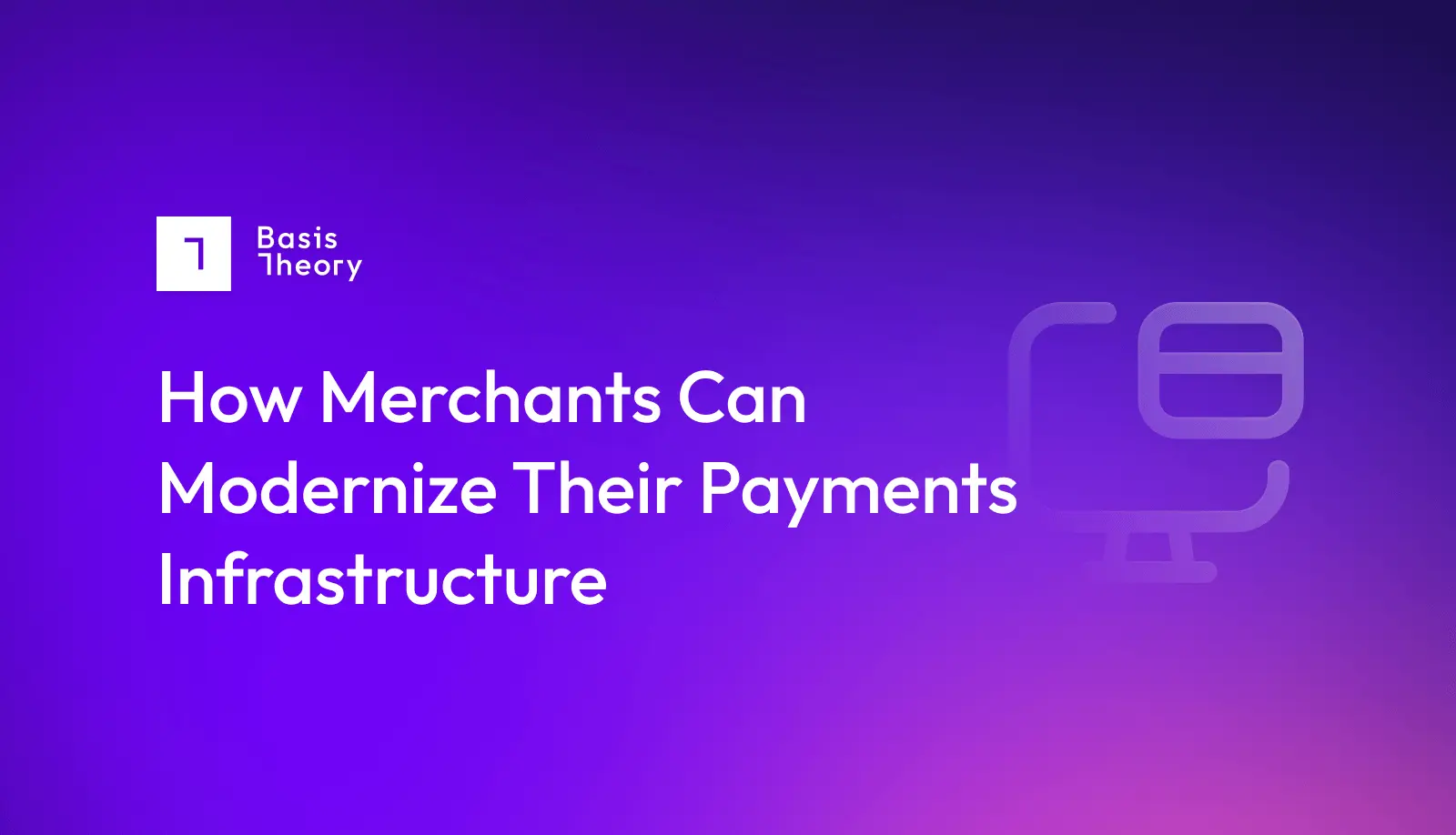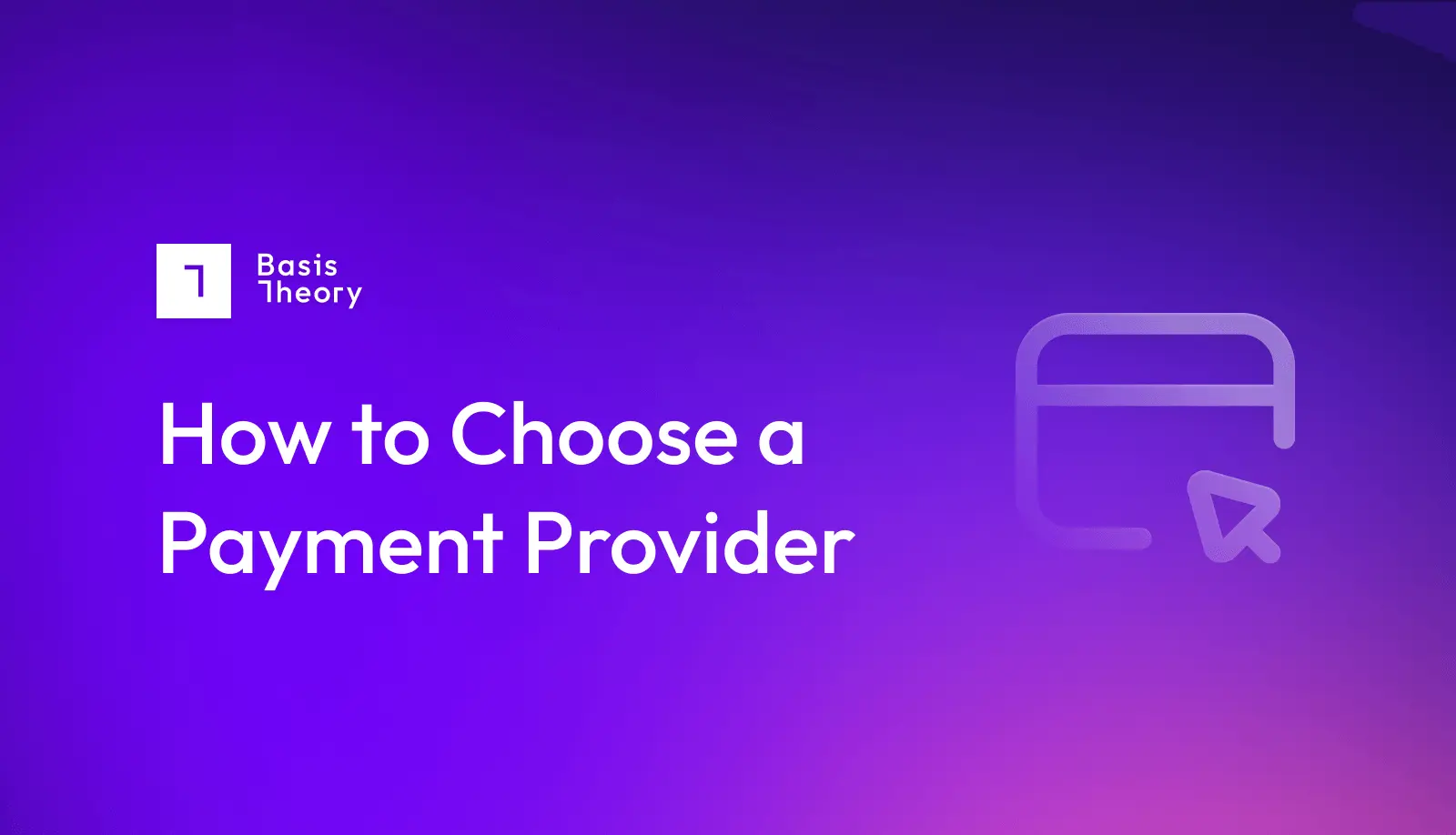How Merchants Can Modernize Their Payments Infrastructure

Payments are an inescapable element of any commercial enterprise, yet the whole payment ecosystem can seem like a closed book to many businesspeople. Beyond the existing complexity, there is a deep and rich history of financial systems and business morphing that reaches back before the Common Era - a story that continues to evolve even today.
What is Payments Infrastructure?
Payments infrastructure refers to the companies and technologies that work together to make it possible for buyers and sellers to exchange money for goods and services. It’s a complex ecosystem of businesses, each taking care of a range of different steps. It includes not only the fundamental players of issuing bank, payment gateway, card network, and acquiring bank - it also encompasses token vaults, security providers, compliance auditors, and more.
The Origin of Modern Payments Infrastructure
Banking and related industries date back almost as far as recorded human history - the first records of financial worth, bulla, date back over 10,000 years. That said, the oldest bank today dates back ‘only’ to the 15th century. During the ensuing 500 or so years, banking was largely static, representing a location where funds were safely stored, and careful records of stored value were maintained. Customers would either use bank-issued tokens of value (what we think of even now as bank notes) or handwritten letters of credit, which evolved to become what we think of today as checks. Banks would have agreements to honor one another’s bank notes and customers’ letters of credit, allowing customers of one bank to deposit the promise of money from someone else’s bank into their own (of course, long ‘bank hold’ times were common, especially when the receiving bank did not have a confident relationship with the sending bank).
As the world started to modernize and digitize in the second half of the twentieth century, however, banking had to accelerate: if business people could no longer wait three days for a mailed letter to arrive in the age of email, so too they could not accept a three day wait for a payment to become available in their bank account. Banks swiftly adopted electronic connections (including the trailblazing ACH system), allowing them to communicate rapidly and settle most transactions overnight. Modern ecommerce has then led to four ages of online payments:
- Awakening: pioneers worked out how to get banks to allow them to hook directly into their systems to transact business
- Mainstreaming: banking institutions, realizing they would be overwhelmed by a flood of individual merchants, appointed payment gateways to be the middleman - ensuring merchants played by the rules, and limiting the number of connections that needed to be maintained
- Simplification: full-service payment service providers like Stripe and Adyen abstracted the whole payment process, so that businesses needed almost no expertise whatsoever to execute online payments
- Optimization: in today’s world, merchants are recognizing that the fees they pay to full-service PSPs could be optimized, and are building their own payments infrastructure to increase revenues and decrease the bite processing fees take out of them
The Importance of Improving Payments Infrastructure
External payments infrastructure - the ecosystem of third parties with which a merchant must interact - is constantly evolving, not least to improve margins and financial results for the business operating there. As a result it is vital for merchants to keep an eye on their own internal payments infrastructure to ensure they are getting the best bang for their buck.
To put this into perspective, consider the difference in fees for processing a transaction in another country (generally standard fees plus an upcharge) rather than having it processed in the country of origin (often a lower fee, and certainly no cross-border upcharge). Or a transaction paid for by debit card: in a full-service PSP environment, the fee will be the same as for any other credit card, even though by law, the maximum fee on a debit card transaction in the United States is 21 cents plus 0.05% of the transaction.
Merchants are coming to realize that a theoretical 2.9% processing fee can easily reach into the mid-3% range (and include additional fees generated from their customers through creative currency conversions) by the time all the extra fees and surcharges are accounted for. However, by implementing a payments decisioning system, which chooses the right partner for each payment transaction, they can optimize their fees (and even add systems like card storage and currency conversion for their own benefit) in ways that add meaningful dollars to the bottom line.
The Foundation of an Improved Payments Infrastructure
In order to build a fully automated internal payments infrastructure, it is critical for any merchant to have control over the collection, storage, and use of customer payment data. In broad strokes, this allows the merchant to choose which processor to use, as well as giving them the option to store and re-use the same information (with the consumer’s permission) for ongoing subscription payments, or for subsequent purchases. However, building one’s own storage system can be time-consuming and expensive, and bring with it significant ongoing maintenance costs to maintain PCI-DSS compliance.
Using a token vault, such as the one offered by Basis Theory, offers any merchant the opportunity to be in control of their customers’ data, while keeping the transmission and storage of that data outside the scope of their own internal payments infrastructure. It also creates the right circumstances to choose and evolve a set of payment partners who can help the merchant arbitrage payment costs - without ever losing control of the customer data.
With the token vault in place, merchants can build sophisticated payment automation systems, encompassing not only payment processor decisioning, but also security checks (for instance limiting the amount any individual can spend over a given period of time), customer experience management, and more.
The Financial System is Evolving Payments Infrastructure - Merchants Need to Keep up
Every player in the payments infrastructure ecosystem is seeking not only to provide great service, but also to maximize their own financial results. Merchants who, during the third phase of payment enjoyed the luxuries of low-effort service from full-service providers, are now taking up the challenge of expanding their payment partner portfolio, and driving down the costs of doing business. In an ever-changing business environment, these initiatives are keeping the balance of power between merchants and payment providers even.
.png?width=365&height=122&name=BTLogo%20(1).png)



